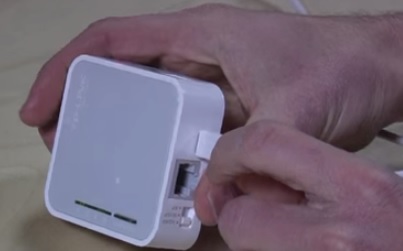
Mobile hotspots are fantastic tools. These little gadgets grab onto networks, such as Verizon Wireless, AT&T, Sprint, and T-Mobile, and then send that signal out to all of our WiFi-enabled devices so we can have WiFi access virtually anywhere that those carriers have coverage.
The overall speed and performance you get out of a mobile hotspot will ultimately depend on the model and make of your hotspot, but also how strongly covered your area is from the company that’s providing the connection.
Verizon and AT&T are the two biggest players here, but Sprint and T-Mobile have also been hard at work extending the range of their own networks. However, no matter which hotspot or service provider you decide to go with, owning a mobile hotspot can be an extremely convenient little gadget to own. That is, when they work.
Just like WiFi routers, the connection and signal strength of our mobile hotspots can often been considerably slower and weaker than we would like.
We want absolutely blazing fast speeds all the time, but in reality, we frequently face slowdowns and signals that do not reach as far as expected.
When we run into a situation like this, what can we do?
One possible option is to use a portable router to extend the range of your mobile hotspot.
What is important to note here is that, when using a router to extend the range of your mobile hotspot connection, you want to make sure that its one of the portable variants.
Portable routers are just like the routers you have connected in your home or office, except for the fact that they are battery powered and can be used anywhere.
Keep in mind that some of the wording may be specific to the brand of portable router you purchase, but the process will essentially be the same no matter what.
Step 1 In your router menu, navigate over to the option thats titled Wireless.
Step 2 Click on the option called Enable WDS Bridging (Something important to keep in mind here is that not every router supports WDS/Bridging functionality. If that happens to be the case with your current router, you’ll need to purchase a different one.)
Step 3 To display all of the connections that are within your range, select Survey.
Step 4 After discovering the connection of your mobile hotspot, choose it.
Step 5 Once chosen, enter the password for your mobile hotspot.
Step 6 After your password has been entered, click the Save button. From here, you’ll see a messaging prompting you to select which channel you would like to use. At this point, click the option that says Yes. This will automatically select the proper channel you’ll want to use.
Step 7 Following that, disable DHCP and then restart your portable router.
Step 8 Boot up your portable router. Do not worry if it takes a while to get going or doesn’t connect right away during this initial boot. You may need to restart it once more or possibly have to upgrade your routers firmware to make sure everything is working the way it should.
With all of these steps completed, you should now be able to further extend the range of your mobile hotspot. Keep in mind that, just like your hotspot, your portable router will also need to be charged every now and then. The TP-LINK model we mentioned in this article reported gets around 2 to 3 hours of battery life on a single charge, so if you plan to use this thing for hours on end, you’ll want to make sure you keep a spare charger close by.
While that’s the primary way of extending the range of your mobile hotspot, there are a couple other ways to achieve this as well. While portable routers are great for extending the range of mobile hotspots that already have WiFi functionality built-in to them, they can also be great tools if you own a USB hotspot/modem. If you use one of these USB dongles for an Internet connection on your laptop or desktop, simply plug into the USB port of the portable hotspot and you’ll have a portable WiFi router on your hands! This can be great if you’ve been looking into upgrading your hotspot to one that supports WiFi, but you dont necessarily want to throw down a lot of dough that would be required for said upgrade.
As we talked about in the beginning of this article, mobile hotspots are phenomenal tools. The ability to carry around a little gadget that sends off high-speed LTE signals wherever we may be is simply wondrous. However, we also get that it can be quite frustrating when these gadgets doesn’t work the way we expect them to. Thanks to the tips we talked about in todays article, you now have ways to solve these problems when they arise. Portable routers are incredibly powerful, yet very underrated tools. And in the scenario we talked about today, they can be your best friend when you want to get some extra strength out of your mobile hotspot.
Hello,
Has anyone out there been successful reliably in extending the Wi-Fi of an iPhone hotspot?
I have an iPhone setup as a Wi-Fi hotspot that I want to extend but have been unsuccessful to date.
Thanks for any help!
How about changing the character set on your webpage. I was unable to read it properly in any browser on my pc or tablet? I suspect this particular article on setting up portable routers is very interesting. How sad…!
I use a strong wifi adapter to capture any of 5 xfinity wifi hotspot signals in an apartment building. I want to be able to switch channels as Windows doesn’t automatically pick the best 1 to connect to. Is buying this kind of router a good solution?